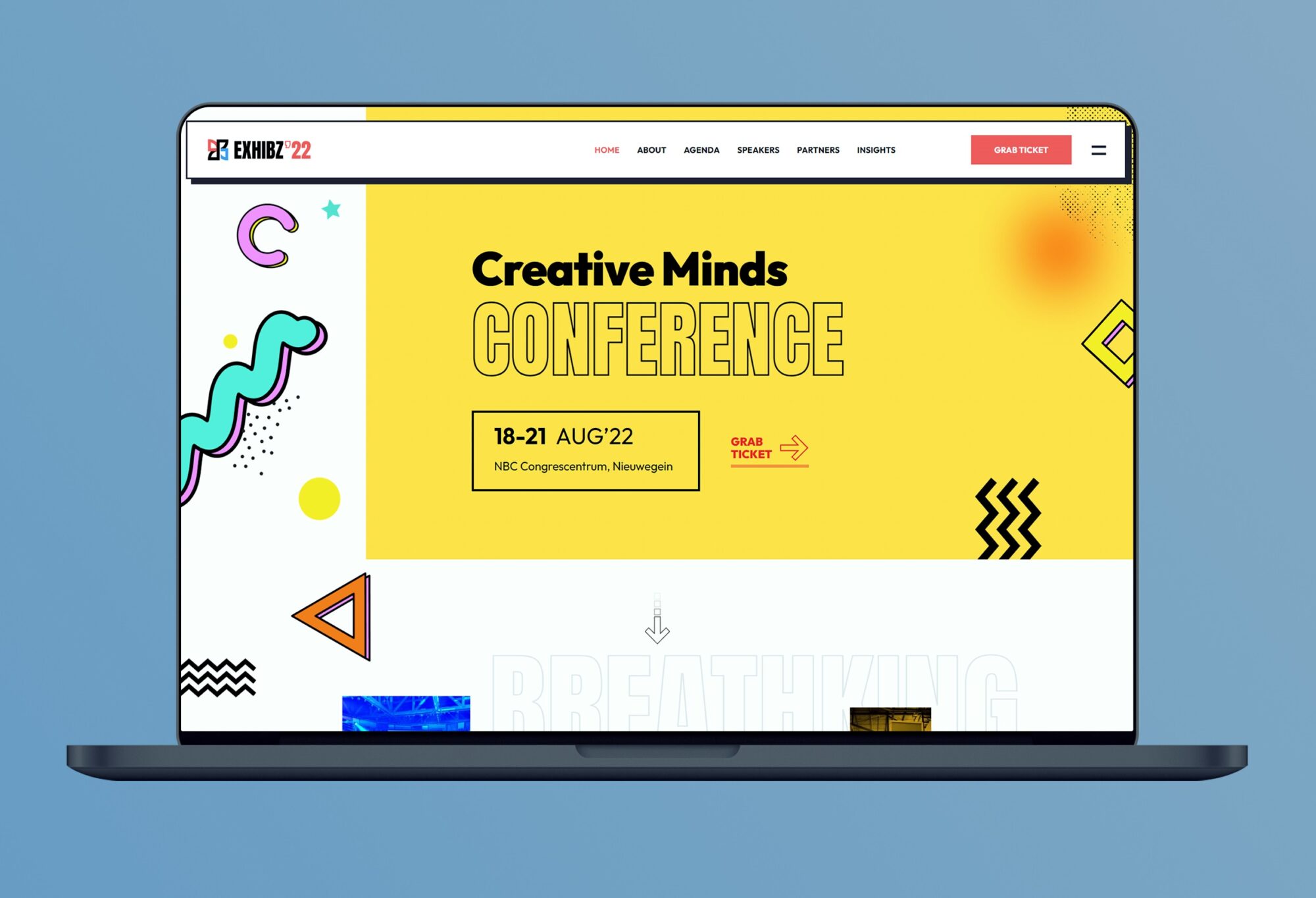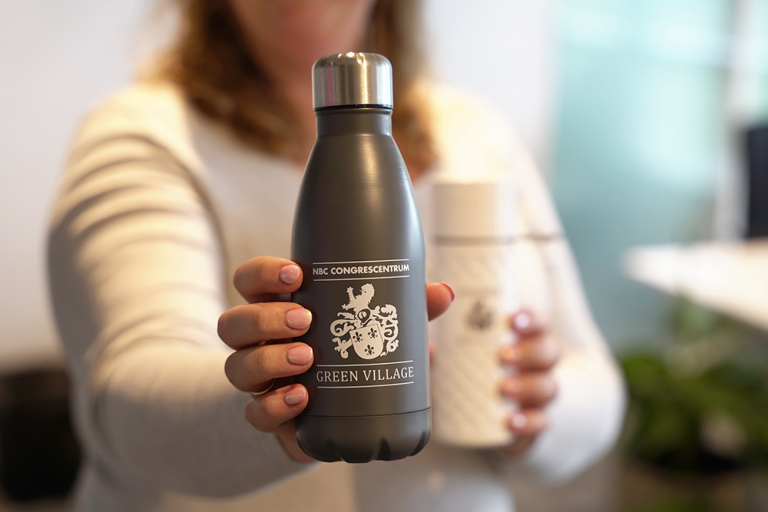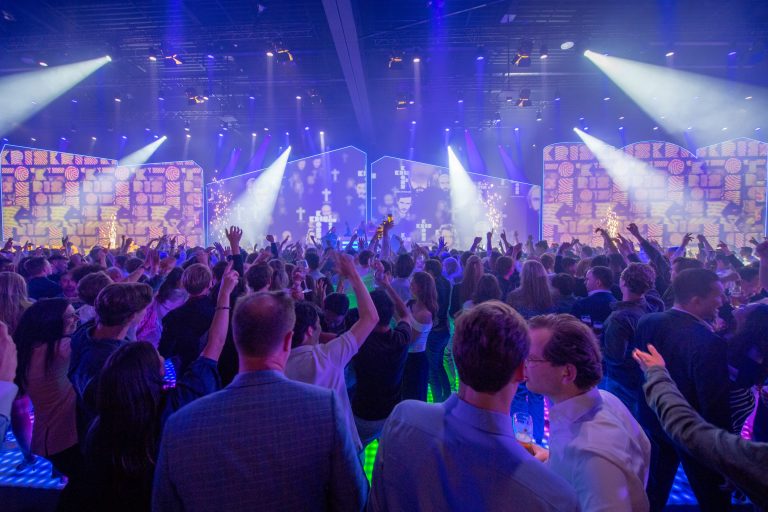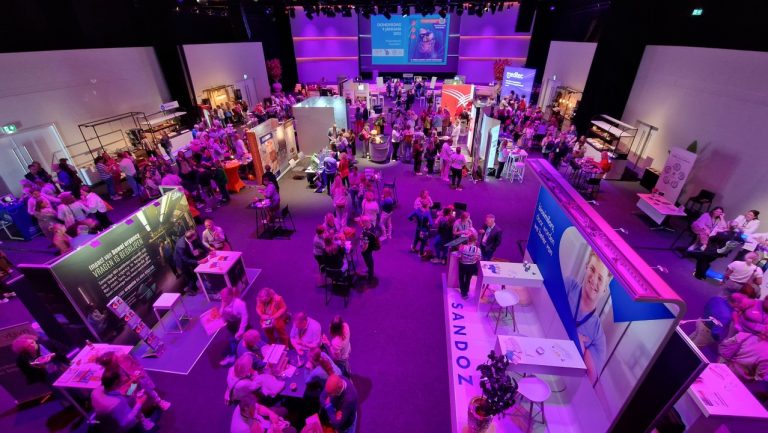Creating a good event website? Here’s what to consider
Every well-organized event needs a strong digital presence. If visitors can’t find the right information about your event online or easily register on the website, you lose them. Therefore, your event website is a crucial part of your event marketing strategy. When creating a good event website that works for your event, you need to consider several factors. We’ve listed them for you!


In addition to facilitating the registration process, your event website is the central place where all information is gathered. But what should a good event website include? And what should you pay attention to when creating it? In this blog, we’ll tell you all about it.
1. Structure and design
What does a good event website look like? While this can be subjective, it’s important that it meets a few criteria:
- Ensure the website loads quickly.
- Make sure all information is displayed clearly and organized.
- Include sufficient and prominent call-to-actions for the registration form.
- Design the website in the event’s house style.
- Choose a clear menu structure.
- Ensure that visitors understand the purpose of the website within 5 seconds of landing on it.
A good menu structure for an event website might look like this:

Additionally, it’s important to fill the website with the necessary content. Consider including:
- Atmosphere photos from previous editions.
- Aftermovies or recorded sessions from previous editions.
- Information about speakers and the program.
- Details about the location, sponsors, and organization.
- Reasons to attend the event.
- Frequently asked questions and answers for participants.
2. Think mobile first
Everyone has a bit of a web designer in them, but chances are you won’t be building the event website yourself. Therefore, ensure a good briefing with the above points. And perhaps most importantly, keep in mind: think mobile first. Since 2020, Google has switched its algorithm to mobile-first indexing. This means the mobile version of a website should be the foundation for the entire site. A good mobile website is also crucial for your marketing efforts, as many visitors will come from social media and email, often visiting the site on their phones.
3. Create a content hub
Your website serves more purposes than just providing information. Turn your event website into a content hub with articles, news, interviews, podcasts, and videos. Think of recorded sessions from previous editions or interviews with speakers. This way, your fans and potential participants can always get a good sense of what the event is about and be engaged with interesting content.
4. The goldmine: your registration form
A beautiful design, fast loading time, inspiring content, and all the practical information? Check. Now, let’s get those registrations. The registration process is the most important part of your website. Ensure it is well-designed and runs smoothly. Here are some tips:
- Make your registration form easy to fill out, for example, with autofill (using LinkedIn profiles) and the ability to press ‘Tab’ to jump to the next field.
- Use a logical order. Ask for the name first before asking for an email address or home address.
- Don’t ask for unnecessary information. Data you won’t use is just extra work for the visitor. Moreover, the data you request must be truly necessary according to the latest GDPR regulations. For tips on this, refer to our whitepaper on the subject.
- Consider what information is useful to you. This is your chance to ask! Think of choices for workshops, interests, or dietary preferences. You can use this information during the event.
- If participants need to pay for tickets, ensure there is a payment option on the website itself (don’t redirect to an external site). Offer multiple payment methods, preferably including invoicing, which is a preferred method for many companies.
- Use a single-page form so users don’t need to navigate to another page. However, test this thoroughly: in some cases, it works better if visitors first enter their name and then are redirected to another form. They are less likely to drop off after having already entered some information.
- Enhance the thank-you page. Include a video thanking the visitor enthusiastically or showing what happens next with their registration. The thank-you page is often forgotten and underutilized, but it provides a great opportunity to thank and engage the visitor creatively.
5. Measuring is knowing
Of course, you want to make your website efforts measurable. You need to know how many people visit your event website, which pages are visited, and where these visitors come from. This allows you to identify what works and optimize accordingly. Here are some tips:
- Install Google Analytics on your website. This allows you to track the most important data on your site. Also, create conversion goals in Analytics to measure important moments such as registrations and contact form submissions.
- Create a free dashboard via Google Data Studio. You can display data from Google Analytics in a clear and real-time manner. Various free templates are available for you to use.
- Use the tool Hotjar. This allows you to create heatmaps on your event website and screen recordings of visitors. You can see exactly what your visitors are doing and where they drop off. And the best part: the free version allows you to make up to 35 screen recordings per day.
6. A/B Testing and Personalization
Want to go a step further than just measuring and analyzing? Start A/B testing. You can test multiple versions of your website to see which converts better. Test different colors for call-to-action buttons, different texts, or various header images. If you think A/B testing is expensive and only worthwhile for large websites, you’re wrong! With the free tool Google Optimize, you can create up to 10 A/B tests. Thanks, Google!
Moreover, this handy tool allows you to personalize your website. This means you can tailor the content on the website to the visitor’s characteristics. With Google Optimize, for example, you can personalize the website based on the traffic source or the visitor’s current location. If a visitor comes via LinkedIn, they will see different content than if they come via Google Ads. You can adjust virtually all blocks and rows with images, texts, and even JavaScript on your website. And yes, personalizing via Optimize is also completely free.
Read more
More inspiration & tips

Sustainable giveaways for your event
Sustainability is increasingly becoming a decisive factor when choosing locations, products, or services. This also applies to the giveaway that guests receive during an event. It's high time to reinvent the traditional giveaway, such as the plastic pen, notebook, or keychain. In this blog, we offer you several ideas for sustainable giveaways that not only help the environment but also keep the memory of your event alive.

Discover the Schirm-Bar and Kris Kross Amsterdam
Did you know that our colleagues collectively worked nearly 15,000 hours last week to ensure the success of the events? We will share this and many more facts with you next week. As we enter the last week of June, we are gearing up to finish the busiest month of the year together with a bang.

Corporate festivals and party evenings in the Dutch summer
It's mid-June, and we've completed the second week! From festivals to party evenings, our clients have hosted beautiful events once again. Despite the typical Dutch weather, it was a successful week, and we'd love to take a moment to reflect on it.
Areas and rooms
Spaces for your event
Frequently asked questions
Do you have a question about our venue or services? You can find the answers to the most frequently asked questions in our FAQ.